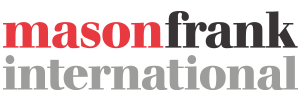
While many employers have increased their focus on mental health and employee wellbeing in the midst of the pandemic, the latest Mason Frank Careers and Hiring Guide has revealed that many professionals still have a workload that is leading them to burnout.
This year’s edition of the world’s largest independent survey of Salesforce professionals reveals that burnout affects 44% of permanent employees in their current role, impacting the job satisfaction, work-life balance, and wellbeing of almost half of the entire Salesforce ecosystem.
Unmanageable workloads, insufficient support, and unrealistic deadlines were reported as the most common causes of professional burnout. And, while homeworking is said to have boosted the work-life balance of professionals since it became more widespread in early 2020, a LinkedIn poll from our social media earlier in the year that’s also quoted in the study reveals that over a quarter (27%) of tech professionals always work overtime.
This has significant impact not just on individuals, but on the industry at large. The survey found that 43% of candidates have started studying for a certification but stopped before achieving it, with one of the top reasons being lack of time for studying because of a high workload in their role. Professional development suffers as a result, worsening a skills shortage already at breaking point.
“You’ve got to protect the health and wellbeing of your team,” explains Zoë Morris, President at Mason Frank, “and employee care starts with taking proactive steps in ensuring your talent avoids burnout.”
“While the tech industry is an exciting one, the demands of the last 18-24 months have undoubtedly had an impact on the work-life balance of Salesforce professionals, which could lead to increased stress if it is not handled correctly. Salesforce professionals are in such high demand for employers that your duty of care goes beyond simply being the right thing to do on a human level, it’s detrimental to businesses and the wider ecosystem to have disengaged individuals working within it.”
Is remote work helping?
Of course, the biggest change over the last two years has been the shift from homeworking being a nice-to-have perk that most people enjoyed, to an essential part of any employment package. Remote working remains high on the agenda for most Salesforce professionals, with over three-quarters (76%) of those currently working remotely reporting that they would reconsider working for their employer if they weren’t offered flexibility around where they worked. But this can often blur the lines between working and out-of-office hours, and employers must be conscious of enforcing this expectation.
Perks that offer more freedom and flexibility are a good place to start: the survey found that 55% of Salesforce professionals currently benefit from flexible working hours, while 53% are given four weeks or more paid time off. But unless workloads and resources are managed more realistically, these perks will do little in avoiding burnout longer-term — 25% of Salesforce professionals are already leaving their employer for a better work-life balance.
“Employers really need to assess workloads consistently to manage reasonable expectations and avoid pile-up”, advises Zoë Morris. “It’s easy for employers to lose track of how much work is on any one team’s plate — especially in specialist areas like tech — so be sure to get the input of your team on the ground.”
New upgrades in Salesforce Genie should make collaborative work much easier, reducing meeting times considerably in the process, but look at ways you can check in to ensure workloads don’t reach critical point, too—the stresses placed on someone where they reach breaking point also mean that they then need time to recharge. It’s not as simple as a pit-stop tire change once a person is burnt out!
“Check-in with them regularly and hold scheduled 1:1s to ensure they have the chance to voice any concerns before they reach that point,” added Morris. “It’s key to remember that the burnout crisis is a people problem, and keeping communication channels open is vital in tackling the issue in a compassionate and understanding way.”
As Salesforce continues to record incredible growth, with customers and partners across the ecosystem all reporting increased demand for the product in this year’s survey, the innovation that’s possible will be a missed chance without taking action.
In summary
It’s clear organizations must act now: the longer the roots of the problem go unaddressed, the worse the burnout crisis will become across the Salesforce ecosystem and tech community at large. A community of exhausted professionals isn’t just a problem for them on a human level, but it threatens any chance you have as an employer of really leveraging Salesforce to help grow your business. It also increases the chances of those hard-to-find cloud specialists leaving you as they seek new pastures elsewhere, and if they drop out of the industry completely it means reducing the pool of talent available at a time when the digital skills gap makes it critical that the dial is moving in the opposite direction.
Look at your own Salesforce teams, assess their workload regularly and keep in constant dialogue with them to ensure they remain engaged, energized and focused.

